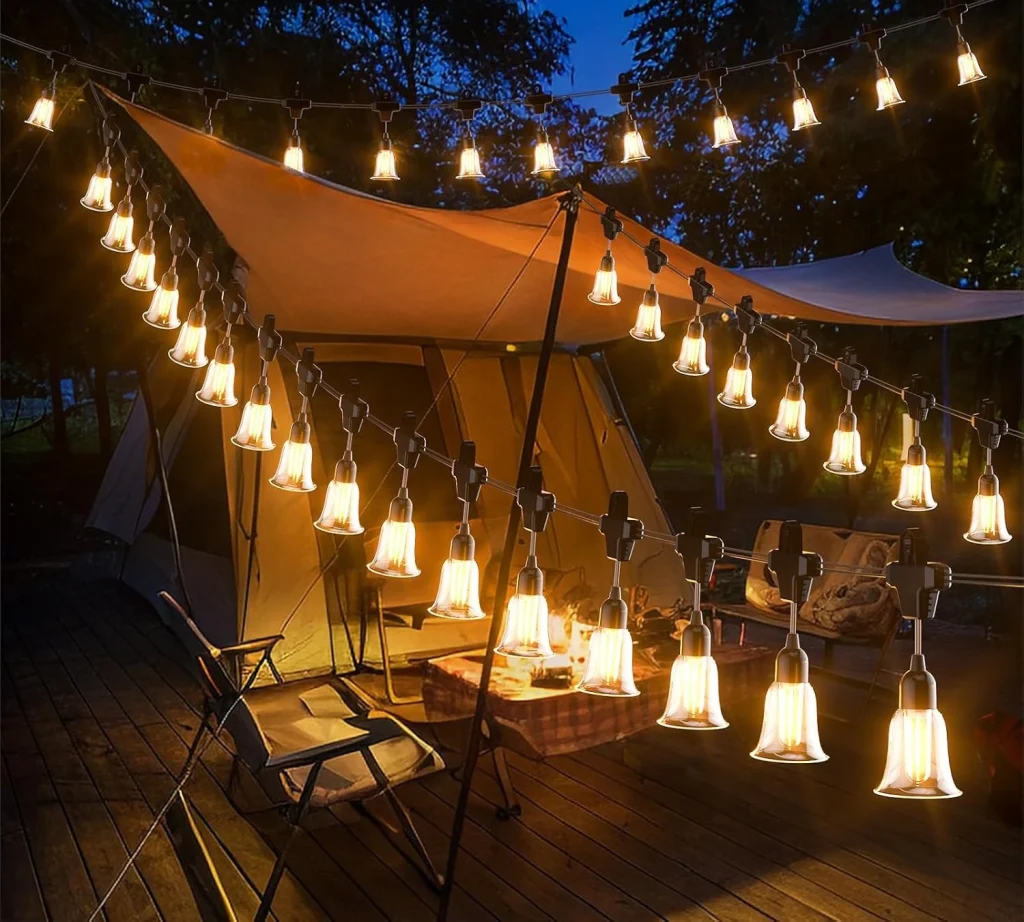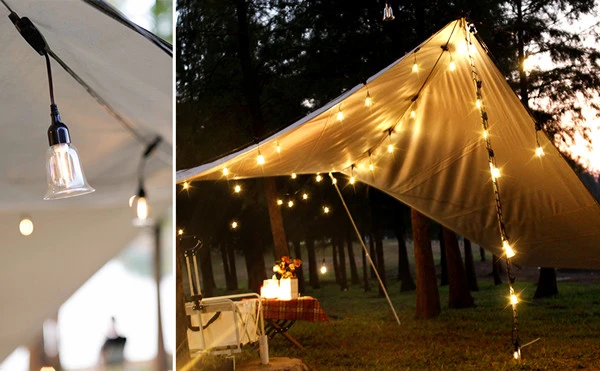Camping offers a chance to reconnect with nature, but a reliable light source is crucial for safety and enjoyment. Solar camping lights are a must-have for camping, combining eco-friendly power with functionality, portability, and durability. These versatile devices illuminate campsites, enhance safety, and reduce reliance on disposable batteries. This article reviews different types of solar camping lights, explains why they’re essential, provides guidance on choosing lights for camping scenarios, and shares tips to maximize battery life in the wild.
Why Solar Camping Lights Are Essential for Camping
Solar camping lights are a must-have for camping due to their sustainability and versatility. Powered by the sun, they eliminate the need for heavy batteries or fuel, making them ideal for remote adventures. Their functionality includes illuminating tents, pathways, or cooking areas, ensuring safety during nighttime activities. Unlike traditional lanterns, solar camping lights are environmentally friendly, reducing waste and carbon footprints.
Their portability makes them easy to pack, with many models collapsing or weighing less than a pound. Durability is another key feature, as most are designed to withstand rain, dust, and rough handling, perfect for rugged outdoor conditions. Whether you’re car camping, backpacking, or surviving in the wilderness, solar camping lights provide reliable illumination, making them indispensable for any trip.

Types of Solar Camping Lights: Features and Performance
Here’s a review of popular types of solar camping lights, focusing on their functionality, portability, and durability:
- Solar Lanterns
- Functionality: Offer 360-degree illumination, ideal for lighting up tents or group areas. Many include adjustable brightness settings and USB charging ports for devices.
- Portability: Collapsible designs (e.g., Luci Solar Lantern) weigh 4-8 ounces and pack flat, fitting easily into backpacks.
- Durability: IP67-rated models resist water and dust, surviving splashes or brief submersion.
- Best For: Family camping or base camps where broad illumination is needed.
- Solar String Lights
- Functionality: Provide ambient lighting for campsites or tents, with some models offering color-changing modes for aesthetics.
- Portability: Lightweight and flexible, they coil into small bundles, weighing 8-12 ounces.
- Durability: Weather-resistant coatings protect against rain, though they’re less rugged than lanterns.
- Best For: Creating a cozy atmosphere during car camping or glamping.
- Solar Flashlights/Spotlights
- Functionality: Deliver focused beams for tasks like navigating trails or setting up tents. Some include SOS modes for emergencies.
- Portability: Compact (5-7 inches long, 3-6 ounces), they fit in pockets or attach to belts.
- Durability: Rugged designs with impact-resistant casings withstand drops and harsh weather.
- Best For: Backpacking or solo trips requiring precise lighting.
- Solar Headlamps
- Functionality: Hands-free lighting for tasks like cooking or hiking. Adjustable straps and brightness levels enhance usability.
- Portability: Ultra-light (2-4 ounces), they’re ideal for minimalist campers.
- Durability: Most are water-resistant (IPX4 or higher) and built for rough use.
- Best For: Night hikes or tasks requiring mobility.
- Solar Multi-Tools
- Functionality: Combine lighting with features like power banks, compasses, or knives, offering all-in-one utility.
- Portability: Slightly heavier (8-16 ounces), but compact for their multifunctionality.
- Durability: Built with sturdy materials to handle outdoor wear and tear.
- Best For: Survival camping where versatility is key.
Each type of solar camping light offers unique benefits, making them a must-have for camping by catering to diverse needs while prioritizing functionality, portability, and durability.
Choosing Lights for Different Camping Scenarios
Choosing lights for camping scenarios depends on your trip’s purpose, duration, and environment. Here’s how to select the right solar camping lights:
- Car Camping: Opt for solar lanterns or string lights to create a well-lit, comfortable campsite. Their broader illumination suits group activities, and portability isn’t a major concern since weight is less restrictive. Look for models with USB ports to charge devices.
- Backpacking: Prioritize portability with solar headlamps or compact flashlights. Choose lightweight (under 6 ounces) and durable models with high lumens (100-200) for trail navigation.
- Glamping: Solar string lights or decorative lanterns enhance ambiance. Select models with adjustable colors or dimming for aesthetic appeal, ensuring durability for outdoor exposure.
- Survival Camping: Multi-tool solar lights with emergency features (e.g., SOS signals, power banks) are ideal. Ensure durability with IP67 ratings for extreme conditions.
- Family Camping: Combine lanterns for communal areas and headlamps for kids. Choose user-friendly designs with functionality like adjustable brightness to suit all ages.
Consider battery capacity (e.g., 1,000-2,000 mAh for longer runtime) and weather resistance (IPX4 or higher) when choosing lights for camping scenarios. Test lights before your trip to ensure they meet your needs.

Tips to Maximize Battery Life in the Wild
To ensure your solar camping lights perform reliably, follow these tips to maximize battery life:
- Optimize Solar Charging: Place the solar panel in direct sunlight for 6-8 hours daily. Angle it to face the sun (south in the Northern Hemisphere) and clean it to remove dust or debris.
- Use Low-Power Modes: Many solar camping lights offer dimming settings. Use lower brightness for tasks like reading to conserve energy.
- Store Properly: When not in use, store lights in a cool, dry place to prevent battery degradation. Avoid leaving them in extreme heat (e.g., inside a hot car).
- Charge Before Trips: Fully charge batteries via solar or USB before departure. This ensures maximum runtime, especially in cloudy or forested areas.
- Avoid Over-Discharging: Turn off lights during the day to prevent unnecessary battery drain. Some models have auto-shutoff features to aid this.
- Carry a Backup Power Source: For extended trips, bring a portable solar charger or power bank to recharge lights, enhancing functionality in low-sunlight conditions.
- Monitor Battery Health: Replace batteries every 2-3 years or after 500-1,000 cycles to maintain performance. Check for signs of reduced runtime or dimming.
These strategies help maximize battery life, ensuring your solar camping lights remain a reliable must-have for camping.
Additional Benefits of Solar Camping Lights
Beyond their core functionality, portability, and durability, solar camping lights offer other advantages. They reduce the need to carry extra batteries or fuel, lightening your load and cutting costs. Their eco-friendly design aligns with sustainable camping practices, minimizing environmental impact. Many models are also versatile, doubling as phone chargers or emergency beacons, enhancing safety in remote areas.
Advancements in solar technology have improved light output (up to 300 lumens) and battery efficiency, making modern solar camping lights more reliable than ever. Their rugged construction ensures they withstand drops, rain, and dust, making them a long-term investment for outdoor enthusiasts.
Conclusion
Solar camping lights are a must-have for camping, offering functionality, portability, and durability for any adventure. From lanterns to headlamps, these lights cater to diverse needs, illuminating campsites and enhancing safety. By choosing lights for camping scenarios and following tips to maximize battery life, campers can enjoy reliable, eco-friendly illumination. Gear up with solar camping lights to make your next outdoor trip safer, greener, and more enjoyable.


Leave a Reply